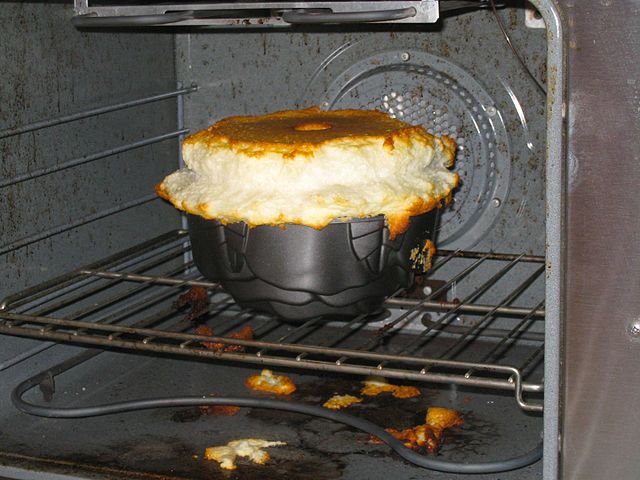A Few Basic Cooking Tips
In a hurry?
Don’t just crank up the heat, which will cause your food to be burned on the outside and raw on the inside – yuck! Instead, cover the food with a lid or tin foil, which will trap the heat and speed up the cooking process. For better or for worse, this will also trap moisture; if the food needs a crispy exterior, remove the covering and turn up the heat for a few minutes at the very end of the cooking process to drive off the external moisture and crisp up the outside. This will result in food that is moist on the inside and crispy on the outside – much better!
Storing your food
Storing fresh food
Don’t waste all of your effort, as well as your fresh, delicious produce, by leaving it in a wilting pile on the counter top! Here are a few pro tips to keep your herbs and veggies lasting as long as possible:
- It is almost always a good idea to give food (esp. from the PYO field) a good, thorough rinse under fresh, cold water after you get it home. Gently pat dry after rinsing or use a salad spinner to dry off lettuce, greens, herbs, etc.
- Separate your food by item and store it in clear plastic baggies or Tupperware in the fridge. Food that you can clearly see is food you are more likely to use. Separating your food by type (e.g. beans in one bag, cilantro in another) also makes it easier to grab when you are hungry and in a hurry.
- Tomatoes taste better if they are not refrigerated. Instead, store them on a countertop out of direct sunlight. Be sure to rinse them thoroughly before eating. Try to eat any split tomatoes right away to avoid the dreaded late-summer fruit fly infestation.
- If your herbs have gotten a bit wilted, you can treat them as you would flowers: just cut off the bases of the stems and stick them in a glass of cold water. If the stems are short, just submerge the whole bunch until they perk up again. For an extra boost, store them, glass and all, in the refrigerator until revived, then wrap them in a moist paper towel and store inside a plastic bag in the fridge.
Freezing food
If you don’t think you will use all of your veggies before they go bad, most veggies respond reasonably well to freezing (except for things like lettuce). Cut up your veggies into bite-sized bits to speed both the freezing and thawing processes. After cutting, blanch veggies by putting them into boiling water for about a minute, and then plunging them immediately into ice water to stop the cooking process. This will help preserve the color and flavor of your food, while destroying any enzymes or microorganisms that might be damaging. Dry thoroughly and then package tightly into sealed plastic freezer bags that have as much air removed as possible. You can freeze fruit and herbs in a similar manner. Be sure to label your bags with the ingredients and the date. More details can be found here.
Canning, dehydrating, and otherwise preserving food
Canning is a labor-intensive process that needs to be done with great care to prevent botulism and other food-borne illnesses. The benefit of canning is that, if done right, your food can last almost indefinitely, under a variety of environmental conditions, without going bad. A detailed explanation of canning is beyond the scope of this blog; instead, we recommend using a guide book such as the Ball Blue Book Guide to Preserving (currently in its 37th edition) or referring to the National Center for Home Food Preservation, which contains up-to-date information on best practices from the USDA and state Extension agencies. Recommended practices for drying, curing, pickling, fermenting, and other food storage techniques can also be found in both of these resources.
Food safety and handling
A few basic tips should keep you in pretty good shape most of the time.
- Wash your hands before preparing food. (We know, you’ve been told this since kindergarten. But just stop and think about all the places your hands have been since the last time you washed them.)
- Don’t touch any food that will be eaten raw (like salad makings) or prepare food for anyone else when you are sick. (Seems obvious, and yet…)
- Promptly refrigerate (or otherwise preserve) most food items. Don’t just leave your food sitting around at room temperature for more than an hour or two unless it is dried, canned, or otherwise supposed to be that way.
- Keep raw meat or fish away from other food, and promptly wash your cutting board, utensils, and counter tops with hot, soapy water when you are done.
- Treat uncooked eggs much as you would treat raw meat, and be sure to wash your hands with warm, soapy water after handling eggs or shells to prevent the spread of salmonella.
- Try to keep your kitchen clean (or at least clean-ish, because let’s be real about group living) and do a good job with your dish washing. Pay special attention to utensils and drinking vessels that are going to be touching multiple people’s mouths.
- A good set of basic food safety tips, including recommended temperatures for hot and cold food, can be found here.




